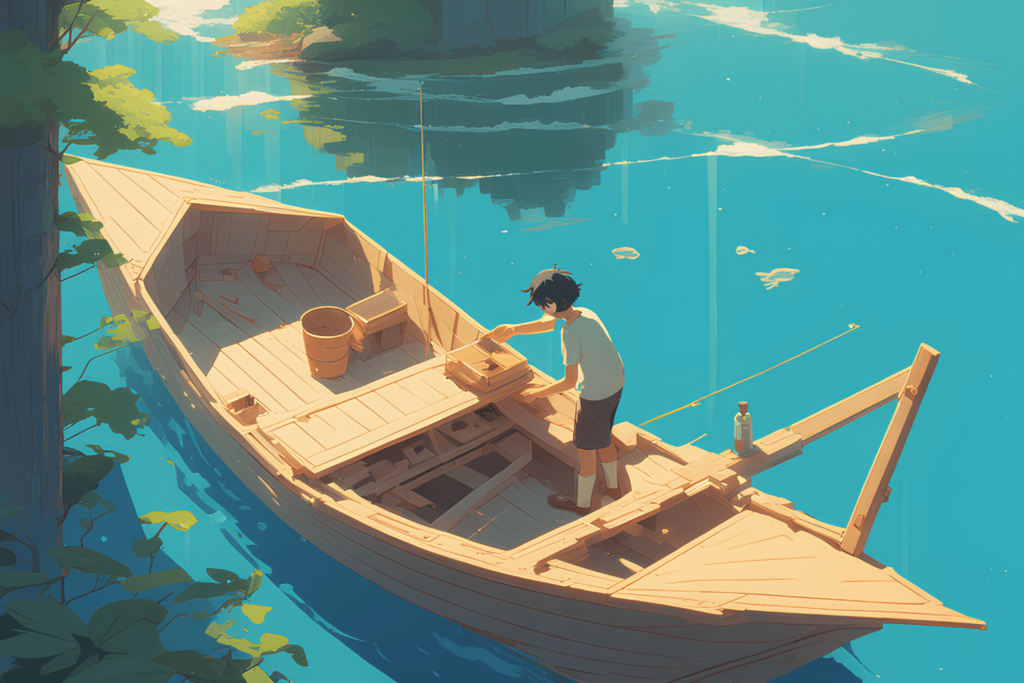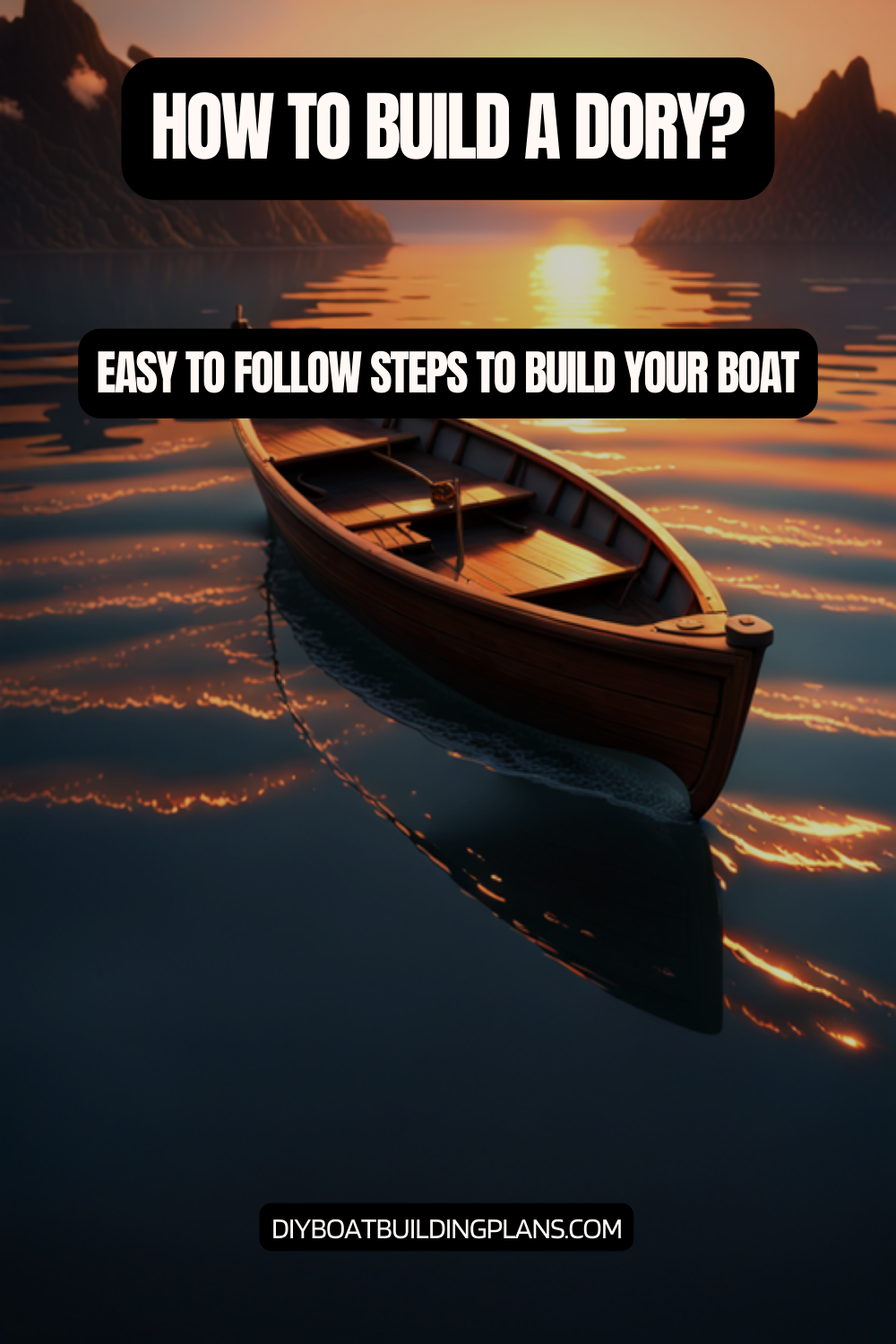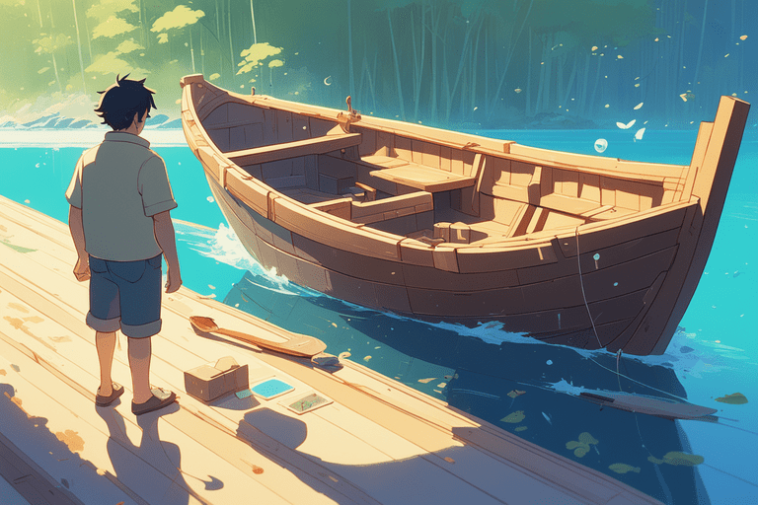Overview of How To a Build Dory
The dory boat is a timeless and iconic vessel that has been a staple in coastal communities for centuries. Originating from the fishing traditions of New England, the dory is a small, lightweight, and highly maneuverable boat that has captured the hearts of sailors and boat enthusiasts worldwide. With its distinctive flat-bottomed design and sharp, pointed bow, the dory boat is a testament to the ingenuity and craftsmanship of its builders.
The history of the dory boat can be traced back to the early colonial era, when fishermen and coastal dwellers relied on these versatile vessels for a variety of tasks, from fishing and transportation to rescue operations. The dory’s unique design, which features a shallow draft and high sides, allowed it to navigate the treacherous waters of the Atlantic Ocean with ease, making it an indispensable tool for the hardy seafarers of the past.
One of the primary advantages of building and owning a dory boat is its versatility. These boats can be used for a wide range of activities, from recreational fishing and leisure cruising to more rugged tasks like hauling cargo or even serving as a tender for larger vessels. The dory’s lightweight construction and maneuverability also make it an ideal choice for those who enjoy exploring remote waterways or navigating through tight spaces, such as harbors or estuaries.
Key Takeaways
- Dory boats are a classic and versatile type of watercraft
- Choosing the right materials is crucial for building a durable and seaworthy dory
- Designing the hull and dimensions requires careful consideration of the boat’s intended use
- Constructing the frame and keel is a critical step in ensuring the dory’s stability and strength
- Proper planking techniques and attention to detail are essential for a smooth and watertight hull

Choosing the Right Materials for Building a Dory
When it comes to building a dory boat, the selection of materials is of paramount importance. The wood used for the construction of the hull, ribs, and other components must be carefully chosen to ensure the boat’s strength, durability, and seaworthiness. Traditional dory builders often favored the use of cedar, oak, and pine, as these woods possess the necessary qualities to withstand the rigors of the marine environment.
In addition to the choice of wood, the hardware, fasteners, and adhesives used in the construction process also play a crucial role. These components must be corrosion-resistant and able to withstand the stresses and strains of the boat’s operation. Stainless steel or bronze hardware, for example, are commonly used in dory construction to ensure long-lasting performance.
The importance of quality materials in dory construction cannot be overstated. Inferior or substandard materials can compromise the boat’s structural integrity, leading to potential safety issues and a shorter lifespan. By investing in high-quality materials, dory builders can ensure that their creation will not only be a joy to build but also a pleasure to own and operate for many years to come.
Designing the Dory’s Hull and Dimensions
When it comes to designing the hull and dimensions of a dory boat, there are several key factors to consider. The size and shape of the dory will be influenced by the intended use of the boat, as well as the builder’s personal preferences and the available space for construction.
Traditional dory design principles often emphasize a shallow draft, a narrow beam, and a sharp, pointed bow. These characteristics allow the dory to navigate shallow waters, maneuver easily, and cut through the waves with efficiency. By studying the design of historical dories and incorporating these time-tested principles, modern builders can create a boat that not only looks authentic but also performs exceptionally well on the water.
In the planning and sketching stage, it is essential to carefully consider the dory’s overall dimensions, including the length, width, and depth of the hull. These measurements will determine the boat’s carrying capacity, stability, and handling characteristics. Additionally, the placement and size of the transom, the curvature of the bow, and the positioning of the oarlocks and seats must all be carefully considered to ensure a well-balanced and functional design.
Constructing the Dory’s Frame and Keel
The foundation of a dory boat is the frame and keel, which provide the structural integrity and shape of the vessel. Building this essential component requires a meticulous approach and a keen eye for detail.
The first step in the construction process is to build the keel and stem assembly. This involves selecting the appropriate wood, cutting it to the desired length and shape, and carefully joining the pieces together to create a strong, stable base for the rest of the boat. The keel, in particular, must be straight and true, as it will serve as the backbone of the dory.
Next, the ribs and transom frame are assembled. These components, which form the boat’s sides and rear, must be carefully shaped and fitted to the keel to ensure a seamless and sturdy connection. The ribs, in particular, must be bent to the correct curvature to match the desired shape of the hull, while the transom frame must be precisely cut and attached to provide a solid foundation for the boat’s stern.
Throughout the construction of the frame and keel, it is essential to ensure that the overall structure is strong, stable, and true to the original design. This may involve the use of specialized tools, jigs, and techniques to achieve the desired results. By taking the time to get this critical stage right, the builder can lay the foundation for a dory that will be both beautiful and seaworthy.
Planking the Dory’s Hull
| Step | Description |
|---|---|
| 1 | Gather materials: plywood, screws, epoxy, fiberglass cloth, etc. |
| 2 | Cut plywood into required shapes for hull, transom, and bulkheads. |
| 3 | Assemble hull by attaching bulkheads to bottom panel and then attaching sides. |
| 4 | Attach transom to hull. |
| 5 | Apply epoxy to seams and fiberglass cloth to reinforce. |
| 6 | Install seats, oarlocks, and other hardware. |
| 7 | Paint or varnish as desired. |
With the frame and keel in place, the next step in building a dory boat is to plank the hull. This process involves carefully cutting and shaping the hull planks, then installing them in a precise and methodical manner to create the boat’s distinctive shape and curvature.
The selection of the right wood for the hull planks is crucial, as it will not only affect the boat’s appearance but also its overall strength and durability. Traditional dory builders often favored the use of cedar or pine, as these woods are lightweight, easy to work with, and resistant to the elements.
The installation of the hull planks requires a delicate touch and a keen eye for detail. Each plank must be carefully measured, cut, and shaped to fit seamlessly with the adjacent planks, creating a smooth and continuous surface. The use of specialized tools, such as hand planes and spokeshaves, can help the builder achieve the desired curvature and fit.
As the planks are installed, it is essential to maintain the dory’s symmetry and overall shape. This may involve the use of temporary bracing or jigs to hold the planks in place while the adhesive or fasteners dry. By taking the time to ensure a proper fit and finish, the builder can create a hull that is not only visually appealing but also structurally sound and seaworthy.
Adding the Dory’s Transom and Bow
With the hull planking complete, the next step in building a dory boat is to add the transom and bow sections. These critical components not only contribute to the boat’s overall aesthetic but also play a crucial role in its performance and handling.
The construction of the transom, which forms the rear of the dory, requires careful attention to detail. The transom must be precisely cut and fitted to the hull, ensuring a watertight and sturdy connection. Traditional dory builders often used a combination of wood and hardware, such as screws or bolts, to secure the transom in place.
The bow section, with its distinctive sharp and pointed design, is another essential element of the dory’s construction. Shaping and fitting the bow requires a delicate touch and a keen eye for detail, as it must seamlessly integrate with the hull’s curvature and overall shape. The use of specialized tools, such as hand planes and spokeshaves, can help the builder achieve the desired look and performance.
Throughout the process of adding the transom and bow, it is essential to maintain the dory’s overall symmetry and balance. This may involve the use of temporary bracing or jigs to hold the components in place while the adhesive or fasteners dry. By taking the time to ensure a proper fit and finish, the builder can create a dory that is not only visually stunning but also highly functional and seaworthy.
Finishing Touches: Oarlocks, Seats, and Painting
The final stages of building a dory boat involve the addition of the oarlocks, seats, and the application of a protective finish. These finishing touches not only enhance the boat’s appearance but also contribute to its overall functionality and comfort.
The installation of the oarlocks is a critical step, as they must be securely mounted and positioned to allow for efficient and comfortable rowing. Traditional dory builders often used a combination of wood and hardware, such as bronze or stainless steel fittings, to create a sturdy and reliable oarlock system.
The design and construction of the dory’s seats and benches are also important considerations. These elements must be carefully crafted to provide a comfortable and stable seating arrangement for the boat’s occupants. The use of high-quality materials, such as marine-grade plywood or hardwoods, can help ensure the long-term durability and performance of these components.
Finally, the application of a protective finish, such as paint or varnish, is the last step in the dory-building process. This step not only enhances the boat’s appearance but also helps to protect the wood from the elements and prolong its lifespan. The choice of finish will depend on the builder’s personal preferences and the intended use of the dory, but a high-quality marine-grade product is recommended to ensure the best possible results.
Launching and Testing Your Homemade Dory
With the construction of your dory boat complete, the next step is to safely transport the vessel to the water and launch it for the first time. This process requires careful planning and attention to detail to ensure a successful and enjoyable experience.
Before launching the dory, it is essential to ensure that the boat is properly secured for transport. This may involve the use of specialized trailers or cradles to support the vessel and protect it from damage during the journey to the launch site. Once at the water’s edge, the dory must be carefully lowered into the water, taking care to maintain its balance and stability.
Once the dory is in the water, it’s time to perform the initial tests and adjustments. This may involve checking the boat’s buoyancy, stability, and handling characteristics, as well as making any necessary tweaks or modifications to the oarlocks, seats, or other components. It’s important to take the time to familiarize yourself with the dory’s performance and to make any necessary adjustments to ensure a safe and enjoyable experience on the water.
As you continue to use and enjoy your homemade dory, it’s important to pay close attention to its performance and to make any necessary maintenance or repairs to keep it in top condition. This may involve regular inspections, minor repairs, and proper storage and winterization procedures to ensure the long-term durability and enjoyment of your boat.
Maintenance and Care for Your Dory Boat
Owning and maintaining a dory boat requires a commitment to proper care and maintenance to ensure its longevity and continued performance. From proper storage and winterization techniques to routine inspections and minor repairs, there are several important steps that dory owners must take to keep their beloved vessels in top condition.
One of the most critical aspects of dory maintenance is proper storage during the off-season. This may involve carefully removing the boat from the water, cleaning and drying the hull, and storing it in a dry, well-ventilated space. Proper winterization, such as protecting the wood from moisture and temperature fluctuations, can help prevent damage and ensure that the dory is ready for the next season.
In addition to proper storage, regular inspections and minor repairs are essential for maintaining the dory’s seaworthiness and performance. This may involve checking for signs of wear or damage, such as cracks, loose fittings, or deteriorating wood, and addressing any issues promptly. By staying on top of these maintenance tasks, dory owners can ensure that their boats continue to provide years of enjoyment and reliable service.
Ultimately, the key to ensuring the long-term durability and enjoyment of a dory boat lies in a commitment to proper care and maintenance. By following best practices for storage, inspection, and repair, dory owners can preserve the timeless beauty and functionality of these iconic vessels for generations to come.

Conclusion – How To a Build Dory
Building a dory is a rewarding and enjoyable project that anyone can do with some basic tools and materials. In this guide, we have shown you how to build a dory from scratch using different methods and types of dories. We have also answered some of the most common questions about dory building and provided some tips and tricks to make your dory look beautiful and last long.
Download over 500 Boat Plans. Click on the link below.
-->Click Here<--
Whether you want to build a dory for recreation, fishing, sailing, or rowing, you can find a design and a method that suits your needs and preferences. You can also customize your dory to express your personality and style.
Building a dory is not only a fun and creative activity, but also a great way to connect with nature and enjoy the outdoors. By following this guide, you can create your own dory and embark on an adventure that you will never forget.
We hope you have found this guide helpful and informative. If you have any questions or feedback, please let us know in the comments below.
FAQs – How To a Build Dory
What is a dory?
A dory is a small, flat-bottomed boat with high sides and a narrow, pointed bow. It is commonly used for fishing and transportation in coastal areas.
What materials are needed to build a dory?
The materials needed to build a dory include marine-grade plywood, epoxy resin, fiberglass cloth, wood screws, and various hand tools such as a saw, drill, and sander.
What are the steps to build a dory?
The steps to build a dory include creating a template, cutting the plywood pieces, assembling the hull, adding the transom and stem, fiberglassing the hull, and finishing the boat with paint or varnish.
How long does it take to build a dory?
The time it takes to build a dory depends on the builder’s skill level and the complexity of the design. A simple dory can be built in a few weekends, while a more intricate design may take several months.
What is the cost of building a dory?
The cost of building a dory varies depending on the materials used and the size and complexity of the design. A basic dory can be built for a few hundred dollars, while a larger, more elaborate design can cost several thousand dollars.
What are the benefits of building a dory?
Building a dory can be a rewarding and fulfilling experience, allowing the builder to create a unique and functional boat. It can also be a cost-effective way to obtain a boat for fishing or recreational use.



